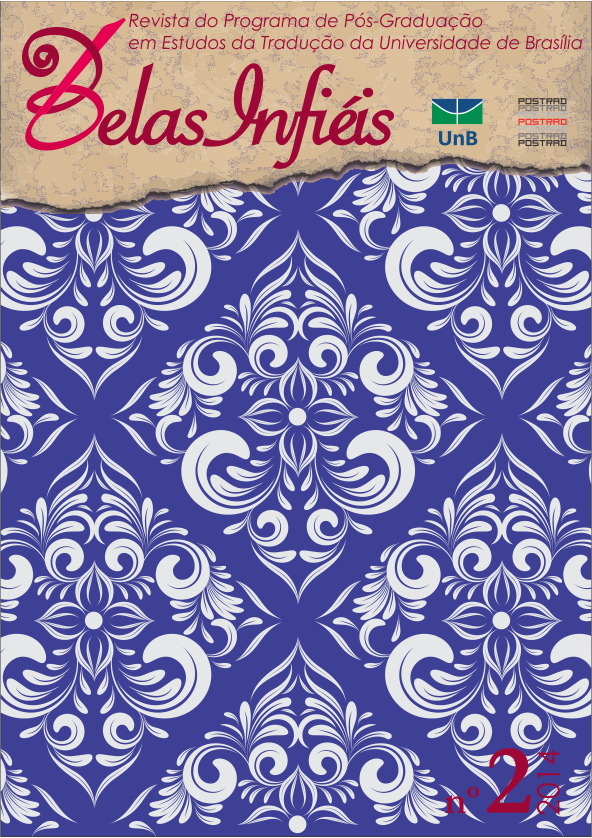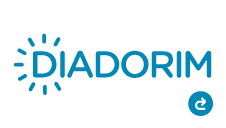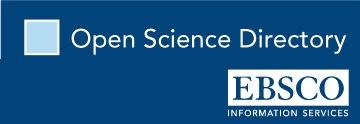ANGLICISMS AND ONLINE JOURNALISM:
FREQUENCY AND PATTERNS OF USAGE
DOI:
https://doi.org/10.26512/belasinfieis.v3.n2.2014.11281Resumen
In this pilot study, I aimed to examine the use of anglicisms in the francophone media in Quebec.
Referencias
Bouchard, C. (1989). «Une obsession nationale: l'anglicisme».Recherches sociographiques,30(1), pp. 67-90.
Bouchard, C.(1999). On n'emprunte qu'aux riches: La valeur sociolinguistique et symbolique des emprunts. Montreal: Fides
Buysschaert, J. (2009). "Quantifying Anglicisms in French, German and Dutch business communication".From will to well. Studies in Linguistics offered to Anne-Marie Simon-Vandenbergen, pp. 69-77.
Cajolet-Laganière, H., Martel, P., & Théoret, M. (2000). «Des emprunts à l’anglais différents des deux côtés de l’Atlantique».Français du Canada, pp. 207-215.
Cardinal, P., & J. P. Jousselin. (1996). «Pour une approche lexicographique globale des anglicismes québécois courants». InFrançais du Canada, français de France: actes du quatrième colloque international de Chicoutimi, Québec, du 21 au 24 septembre 1994, 4, p. 273. Max Niemeyer Verlag.
Chesley,P. (2010)"Lexical borrowings in French: Anglicisms as a separate phenomenon".Journal of French Language Studies, 20, pp.231-251
Chaput, L. (2013).La variation linguistique dans les blogues journalistiques québécois. Ph.D.thesis, the University of Western Ontario
Davis, L. D. (2011). Linguistic accommodation in Quebec media. Master’s thesis, Purdue University, Indiana (USA).
Deroy, L. (1956). L’emprunt linguistique.Paris:Belles Lettres.Edition revue et augmentée, 1980.Dubois, J. (1973). Dictionnaire de linguistique, Paris: Larousse.
Forest J. (2006). Les anglicismes de la vie quotidienne des Québécois: Essai. Montréal: Triptyque.
Forest J. (2008, réédition 2011).Le Grand Glossaire des anglicismes. Montréal: Triptyque.
Forgue G. J. (1986). "English loan words in French today".Journal of English Linguistics, 19(2), pp. 285-294.
Gilbert, P. (1973). «Le néologisme en français contemporain». Français dans le Monde,12(94), pp. 11-15.
Görlach, M. (2003).English words abroad(Vol. 7). John BenjaminsPublishing.
Grigg P. (1997). "Toubon or not Toubon: The influence of the English language in contemporaryFrance". English Studies, 78(4), pp. 68-384.
Haden, E. F., andE. A. Joliat.(1940). «Le genre grammatical des substantifs en franco-canadien empruntés à l'anglais».InPublications of the Modern Language Association of America, pp. 839-854.
Harris, J., andW. Cardoso.(2013).“The frequency of written and spoken anglicisms in two varieties of French”. Texte et Corpus, 4.
Haugen, E. (1950). “The Analysis of Linguistic Borrowing”. Language, 26, pp. 210-231.
Heath, J. (1989).From code-switching to borrowing: foreign and diglossic mixing in Moroccan Arabic. London: Kegan Paul International.
Hope, T.E. (1962). "Loan words as Cultural and Lexical Symbols".Archivum Linguisticum, 14, pp. 111-121, and (1963), 15, pp. 29-42.
Humbley, J. (1974). «Vers une typologie de l'emprunt linguistique», Cahiers de lexicologie,Paris: Didier/Larousse, 2(25), pp. 46-70.
Jespersen, O. (1921). Language, its nature, origin and development.George Allen & Unwin, London.
Laviosa, S. (2007). “Studying Anglicisms with Comparable and Parallel Corpora”.Belgian journal of linguistics,21(1).
Lockerbie, I., & C. Ego. (2003). «Le débat sur l'aménagement du français au Québec».Globe,6(1), pp. 125-149.
Loubier, C. (2011). De l’usage de l’emprunt linguistique, Office québécois de la langue française.
Mareschal,G. (1992). «L’influence comparée de l’anglais sur le français dans différentes aires géographiques francophones». Journal of the Canadian Association of Applied Linguistics, 14(2), pp. 107-120.
Martel, P., Cajolet-Laganière, H., & Langlois, M. F. (2001). «Les textes journalistiques québécois sont-ils «envahis» par les emprunts critiqués à l’anglais?»Terminogramme, 97-98, Norme et médias. Office québécois de la langue française.
Meney, L. (1994). «Pour une typologie des anglicismes en français du Canada». French Review, pp. 930-943.
Mercier, L., & Quemada, B. (2002).La Société du parlerfrançais au Canada et la mise en valeur du patrimoine linguistique québécois (1902-1962): histoire de son enquête et genèse de son glossaire. Presses Université Laval.
Merillou, C. (1999). «Au confluent de deux langues. Anglicismes et traduction en français québécois».Le Langage et l'homme,34(1), pp. 129-144.
Miege, G. (1685).Nouvelle Nomenclature Française et Anglaise. London, reissued in The Great French Dictionary, pt. I., London, 1688.
Miege, G. (1687).The Grounds of the French Tongue.London, reissued in The Great French Dictionary,pt. II, London, 1688.
Nadasdi, T. (1991). «Divergence sémantique des anglicismes au Québec».Revue québécoise de linguistique théorique et appliquée,10(3), pp. 173-187.
Oakes, L. (2008). "Language planning and policy in Quebec".Studies in French applied linguistics,21, p. 345.
Picone,M. D. (1996). Anglicisms, neologisms and dynamic French. Amsterdam: John Benjamins Publishing.
Privat, M. (1994). «Les anglicismes en français du Québec». InActas del II Coloquio sobre los estudios de filología francesa en la Universidad española:(Almagro, 3-5 de mayo de 1993),pp. 167-172. Servicio de Publicaciones.
Rey, A. (1970). La lexicologie. Paris: Klincksieck.
Ringbom, H. (1983). "Borrowing and lexical transfer".Applied Linguistics,4(3), pp. 207-212.
Rollason, C. (2003). "The use of Anglicisms in contemporary French".Crossing Barriers and Bridging Cultures: The Challenges of Multilingual Translation for the European Union, p. 21.
Rollason, C. (2005). "Language borrowings in a context of unequal systems: Anglicisms in French and Spanish".Lingua Franca, Le Bulletin des Interpretes du Parlement Européen,8(2), pp. 9-14.
Sabouné, S. (1990). Anglicismes, canadianismes et mots folkloriques dans les dictionnaires Bélisle (1979) et Plus (1988): un aperçu du cheminement du lexique français québécois. Master’s thesis, University of British Columbia.
Saint, E. C. (2013). «Les attitudes à l’égardde l’emprunt à l’anglais au Québec et en France: Le cas du domaine informatique».Sciences du langage, p. 87.
Sapir, E. (1921).Language: An introduction to the study of speech. New York: Harcourt, Brace.
Saugera, V. (2012). "The inflectional behavior ofEnglish-origin adjectives in French".Journal of French Language Studies,22(02), pp. 225-250.
Saussure, F. de (1915, réed. 1972).Cours de Linguistique Générale.Paris: Payot.
Solano, R. M. (2012). "Multi-word loan translations and semantic borrowings from English in French journalistic discourse". The Anglicization of European Lexis, p.199. Chicago.
Storz, C. (1990). Les anglicismes et les américanismes dans la langue française depuis 1945: une approche linguistique et didactique, thèse de 3ecycle sous la direction de M le Professeur Robert GALISSON, Université Paris III Sorbonne Nouvelle.
Théoret M. (1991). «La situation des anglicismes au Québec». In P. Martel & H. Cajolet-Laganière (eds.), Actes du colloque sur les anglicismes et leur traitement lexicographique: Communications, discussions et synthèses: Magog du 24 Au 27 Septembre 1991. Québec: Gouvernement du Québec, Office de la langue française. pp. 79-92.
Thogmartin C. (1984). "Some 'English' words in French".French Review, 57(4), pp. 447-455.
Timmins S. (1995). French fun: The real spoken language of Québec. Toronto: Wiley.
Ullmann S. D. (1947). "Anglicisms in French: Notes on their chronology, range, and reception". Publications of the Modern Language Association of America, 62(4), pp. 1153-1177.
Vinet, M. T. (1996). «Lexique, emprunts et invariants: une analyse théorique des anglicismes en français du Québec».Revue québécoise de linguistique,24(2), pp. 165-181.
Walter, H. (2005). L’intégration des mots venus d’ailleurs.ALSIC, 8, 1, pp. 35-44.
Whitney, W. D. (1875) The Life and Growth of Language. New York: D. Appleton.
Whitney, W. D. (1881). "On mixture in language." Transactions of the American Philosophical Association, 12, pp. 1-26.
Wise H. (1997). The vocabulary of modern French: Origins, structure and function. London: Routledge.
Reference works
Forest, C. & D. Boudreau. (1999). Dictionnaire des anglicismes, Le Colpron. Laval: Beauchemin.
Rey-Debove, J. & A. Rey (dir). (1993) Le Nouveau Petit Robert, Dictionnaire Alphabétique et Analogique de la Langue Française. Paris: Le Robert.
Villers, M.E. de (2012). Multidictionnaire de la langue française, 5eédition ”“version numérique. Montréal: Les Editions Québec Amérique.
Descargas
Publicado
Número
Sección
Licencia
Copyright Statement
Given the public access to this journal, the texts are free to use but requires the recognition of the original authorship and initial publication in this journal to be properly stated.
The journal allows the use of works published for non-commercial purposes, including the right to submit the work to publicly accessible databases. Published contributions are the sole and exclusive responsibility of the author(s).
- When submitting papers to be evaluated by the Belas Infiéis journal, the author(s):
- Declare that the contents of the contributions are original and of their original creation, being entirely responsible for their content if there is an objection by third parties.
- Claim to be aware that they should not commit academic plagiarism.
- Declare that the manuscript has not been published, completely or partially, in Portuguese or another language. If it is a translation it should be submitted to the Translated Articles section.
- Declare that the manuscript is not being evaluated by other journals.
- Declare that the manuscript was not submitted to another journal simultaneously.
- Commit(s) to inform the journal of any kind of error or inaccuracy in their contribution (published, in evaluation or in editing) and to collaborate with the editors to make due corrections of the article (when in evaluation or editing) or erratum/retraction (after publication).
- Declare that there is no conflict of interest regarding the published work.
- Authorize its release if it is accepted for publication without any kind of monetary compensation.
- Agree to assign non-exclusive rights to publication to the magazine, remaining free to make their contribution available in other media as long as the publication of the first version in Belas Infiéis magazine is mentioned. They also authorize Belas Infiéis to assign their texts for reproduction in content indexers, virtual libraries and similar platforms.
- Maintain copyright and grant the journal the right of first publication, the work being licensed under theCreative Commons Attribution License.
- Is/Are allowed and encouraged to publish and distribute their work online after the editorial process, which may increase the impact and citation of the published work.
- Authorize the editorial team to make textual adjustments and to adapt the article to the publication rules, when necessary.



















